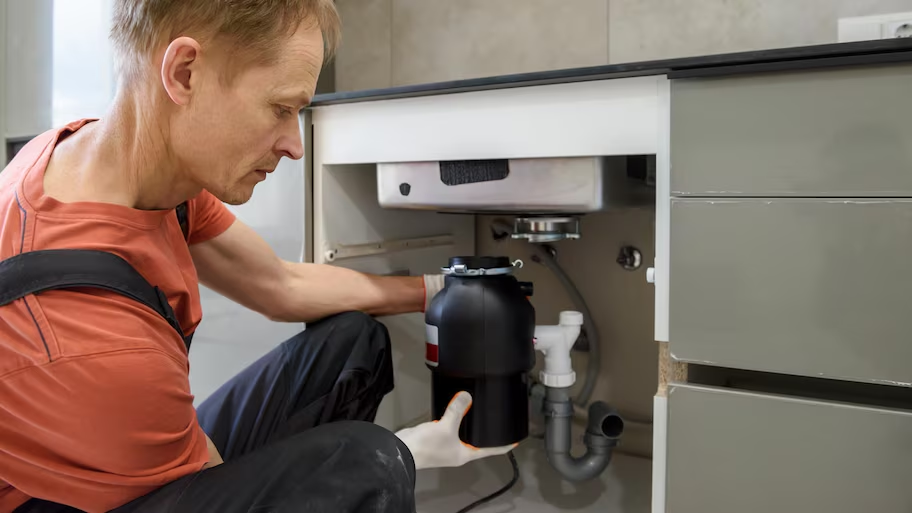Effective Methods for Fixing a Dripping Garbage Disposal
Effective Methods for Fixing a Dripping Garbage Disposal
Blog Article
Presented here down the page you can locate some great guidance about Tips on Fixing a Leaking Garbage Disposal.

Waste disposal unit are vital kitchen appliances that help in getting rid of food waste successfully. However, a leaking waste disposal unit can be a frustrating and unpleasant trouble to take care of. Fortunately, several leakages can be repaired easily with a few simple steps. In this article, we will review exactly how to deal with a leaking waste disposal unit efficiently.
Intro
Garbage disposals are mounted under kitchen area sinks and are developed to shred food waste right into smaller sized items, enabling it to pass through the pipes system quickly. While these devices are generally dependable, leaks can happen in time due to damage, loose links, or damage to the unit.
Step-by-Step Guide to Taking Care Of a Dripping Garbage Disposal
Turn Off the Power
Prior to attempting any kind of repair services, ensure that the power to the waste disposal unit device is turned off to prevent the risk of electric shock.
Situate the Leakage
Recognize the specific place of the leak and identify the cause
Tighten up Links
Utilize a wrench to tighten any kind of loosened links between the disposal device and the plumbing system.
Change Seals or Gaskets
If the leakage is because of worn seals or gaskets, eliminate the old components and change them with brand-new ones.
Patching Cracks or Openings
For cracks or holes in the disposal device, use epoxy or a suitable patching product to secure the damaged area.
Recognizing the Resource of the Leakage
Before trying to fix a leaking garbage disposal, it is important to recognize the source of the leak. This can normally be done with aesthetic evaluation or by conducting simple examinations.
Visual Evaluation
Check the garbage disposal system thoroughly for any kind of indications of water leak. Pay close attention to locations around seals, gaskets, and connection factors.
Examining for Leaks
One method to evaluate for leakages is by running water through the disposal unit and looking for any kind of visible indications of leakage.
Common Root Causes Of Leaks in Trash Disposals
Worn Seals and Gaskets
Seals and gaskets play a critical function in stopping water from leaking out of the waste disposal unit. In time, these parts can deteriorate, causing leaks around the disposal unit.
Loose Connections
The links between the garbage disposal and the pipes system can come to be loose gradually, triggering water to leak out throughout procedure.
Fractures or Holes in the Disposal Unit
Physical damages to the waste disposal unit, such as cracks or openings in the real estate, can additionally lead to leakages.
Tools and Products Needed for Repairing a Dripping Garbage Disposal
Prior to starting the repair service process, gather the necessary devices and materials, consisting of a screwdriver, flexible wrench, plumber's putty, replacement seals or gaskets, and epoxy or patching product for fixing fractures or holes.
Examining the Waste Disposal Unit After Repair Work
When the repair is full, evaluate the waste disposal unit by running water via it to guarantee that the leakage has been dealt with.
Preventive Maintenance Tips to Avoid Future Leakages
To stop future leakages, it is important to do normal upkeep on your garbage disposal. This includes keeping it tidy, avoiding placing non-food things or hard items down the disposal, and regularly looking for leaks or various other concerns.
Final thought
In conclusion, dealing with a leaking garbage disposal is a fairly straightforward process that can be finished with standard tools and products. By adhering to the actions described in this post and exercising precautionary upkeep, you can keep your waste disposal unit in good working condition and stay clear of pricey fixings in the future.
HERE’S HOW TO FIX YOUR GARBAGE DISPOSAL
WHAT TO DO IF SOMETHING IS STUCK IN YOUR GARBAGE DISPOSAL
If the impeller won’t turn, there’s probably something stuck in the disposal. It could be a steak bone or peach pit, although plumbers report pulling all sorts of inappropriate objects out of disposals, such as bottle caps or aluminum foil. Make sure power to the disposal is off, and look inside to see if you can see the source of the jam.
Never stick your fingers in a disposal. Pull out anything you see with tongs or pliers.
If the disposal still won’t work, it may be time to call a plumber or consider buying a new disposal. GEM Plumbing & Heating is here for all of your garbage disposal needs.
WHAT TO DO IF YOUR GARBAGE DISPOSAL DRAIN IS CLOGGED
Take everything out from underneath your sink and put a bucket or other container under your disposal to catch any water that drains out. Disconnect your disposal from the power supply. If it’s plugged into a wall outlet, unplug it. If it’s hardwired into an electrical box, go to the electrical panel and turn off the breaker for the disposal. Pour ¼ cup of baking soda into the drain, followed by ½ cup of white vinegar. Give the solution a few minutes to fizz and do its work. Look into the disposal with a flashlight to see if you can see an object that might be causing the clog. If you see it, remove it using tongs or pliers. MORE TIPS ON DEALING WITH A CLOGGED GARBAGE DISPOSAL
Never use drain cleaner in a garbage disposal. It can damage the plastic parts inside the disposal. You can also be splashed with the caustic liquid while working to clear the clog. Beware! Never stick your fingers into a garbage disposal. Trust us — not a good idea. In many instances, your dishwasher drains through your garbage disposal. This allows the disposal to grind any large food particles that may be drained out of your dishwasher. There are some jurisdictions, however, where the plumbing code prohibits such a connection. WHAT TO DO WHEN YOUR DISHWASHER DRAINS THROUGH THE DISPOSAL
Run some water in the sink so your plunger has at least a ½-inch of water to create a seal and plunge vigorously up and down several times. You may need to repeat this several times. Run hot water down the drain to clear any residue that remains.

Hopefully you liked our topic on Why Is . Thanks for spending some time to read through our content. Enjoyed reading our content? Please share it. Let other people find it. I am grateful for your time. Don't forget to visit our blog back soon.
Quote Report this page